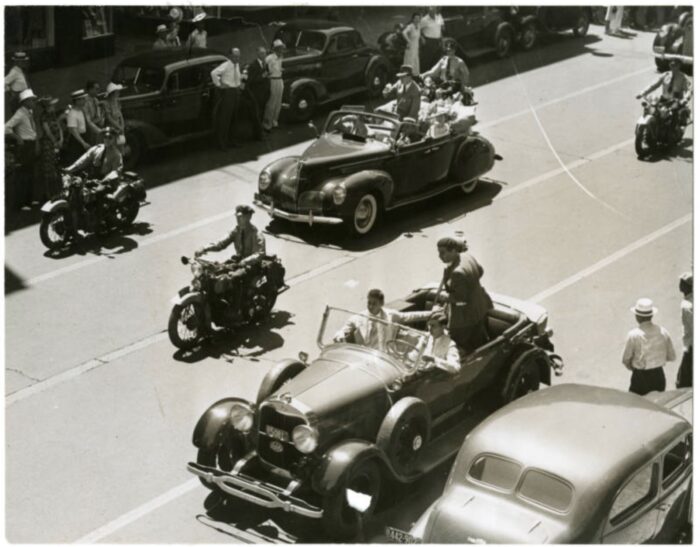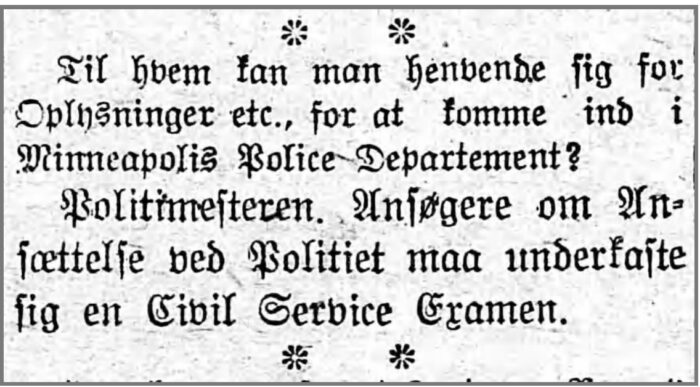On June 10, 1909, the first automobile patrol wagon was put into service by the Minneapolis Police Department. It had originally been designated for the North Side Station but was used for the Central Station. It cost $2500 ($70,823 in 2020 dollars).
Law required that all automobile patrol wagons be enclosed. The closed body of the automobile patrol wagon was built and placed on a Rambler touring car of 35 horse power.
The automobile patrol wagon was also equipped to be used as an ambulance and, in fact, was always used if the call for an ambulance was coming from some distance away.
From June 10 through December 31, 1909, the automobile patrol wagon travelled a total of 5,144 miles.
The cost of repairs during that period cost $312.88 ($8,838). Gasoline and oil cost $142.97 ($4022 in 2020 dollars). The automobile patrol wagon responded to 2,764 calls. Several times, it travelled more than 70 miles in one day.
We know that the first automobile patrol wagon was chauffeured by Sergeant James McElligot, Patrolmen Charles E. Wolfe and Peter O’Neill, and Detectives Otto Wirtensohn and Oscar Martinson. We are not sure which of these officers are pictured in the photograph above from 1909.
Sources:
Annual Report of the the Various City Officers of the City of Minneapolis for 1909
Minneapolis Tribune of June 11, 1909
Minneapolis Tribune of February 20, 1910
Photograph by Unknown, Public Domain











